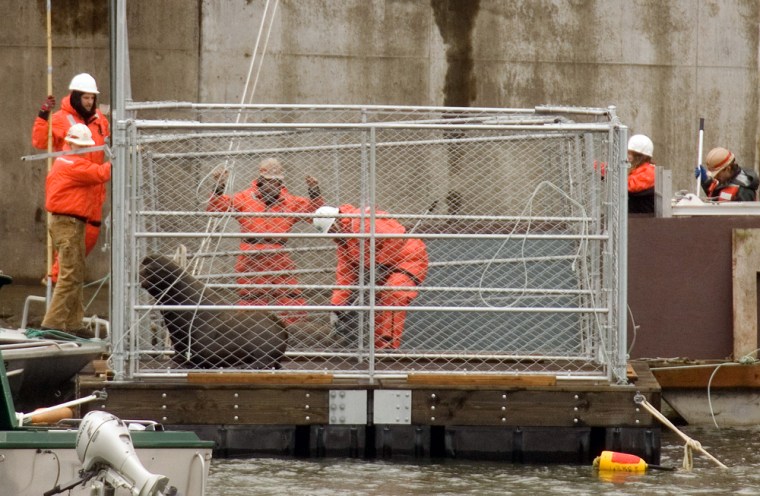There's "protected" on paper and there's "protected" on the river.
Under a 1972 federal law, certain species of sea lion cannot be harmed. But the Columbia River region is big enough, and parts of it are wild and isolated enough, to hide many sins.
That was clear over the weekend, when six protected sea lions were found shot to death with a high-powered rifle near the Bonneville Dam.
Suspicion immediately fell on fishermen, who have long complained bitterly that sea lions gobble up salmon at the base of the dam. But so far, investigators say they have no hard evidence as to who did it and why. And while rewards have been posted for arrests, there is talk of a defense fund for the gunmen if they are ever caught.
A preliminary examination has yet to find any bullets or shells that might yield clues to who fired the shots.
"Whoever did this knew what he was doing. This was a very bold and open act," Brian Gorman, a spokesman for the National Marine Fisheries Service, said Tuesday.
The case is under investigation by federal authorities, Oregon State Police and Oregon and Washington wildlife authorities, since the river forms the boundary between the two states.
Shootings a sign of frustration
While the killings have been loudly denounced from many directions, Brian Tarabochia, a frequent spokesman for the salmon fishermen in the seaport town of Astoria, said the shootings are signs of frustration and a sense of helplessness.
"I don't think many people are losing much sleep over the deaths," he said Tuesday. "I think people are getting frustrated. That's a sign of what happened the other day." He said some fishermen may "pass the hat for the lawyer fees if they are caught."
It is not the first time sea lions have been shot in Oregon.
Last year, two men were arrested for shooting two in the Willamette River near its confluence with the Columbia. They were convicted and fined. One was a fisherman who claimed a sea lion was stealing a fish off his line; the other man shot a sea lion from a bridge, apparently for kicks.
Commercial and recreational fishermen have long complained that sea lions hang around at the Bonneville Dam and boldly snatch their catches from fishing lines or devour Chinook salmon at the dam's fish ladders as they struggle to make their way upstream during the spring run. Also, Indian tribes argue that they are being deprived of the salmon guaranteed to them under 19th-century treaties.
In a practice that began two weeks ago, Washington and Oregon wildlife authorities catch nuisance sea lions in floating traps at the base of the dam and take some of them away to Sea World aquariums or similar places, or release them at the mouth of the Columbia, 145 miles away. The trapping has been stopped since the shootings.
The California and Steller sea lions that were killed over the weekend were shot after they had crawled into the steel cages. Investigators think the killers used a boat to navigate the tricky waters, dropped the doors on two of the cages and opened fire from close range, perhaps cleaning up the spent shells to remove any evidence. The carcasses were found Sunday.
Sea lions not considered threatened or endangered
California sea lions are protected under federal law but are not considered threatened or endangered; their population has flourished in recent years and is thought to be at about 240,000. Steller sea lions are listed as threatened. They are thought to number about 2,600 in Oregon and Washington, but they live in many other areas, too.
About 70 different California sea lions and 17 Steller sea lions have been seen at the dam this year. When the cages are left open, they sometimes climb in, rest, then go away.
The Humane Society of the United States has offered $5,000 for information leading to convictions, and the Tucson-based Animal Defense Council has put up $500.
The National Marine Fisheries Service earlier this year authorized the killing or capture of up to 85 sea lions a year for five years. The Humane Society went to court to block the action, arguing that this year's Chinook salmon run will be among the biggest in years.
A federal appeals court halted the killings but allowed trapping to continue until a three-judge panel could hear arguments, scheduled for Thursday.
Last month, the appeals court suggested mediation between Indian tribes and fishermen on one side and conservationists on the other might be possible.
Charles Hudson of the Columbia River Inter-Tribal Fish Commission said his organization is disappointed that a criminal act had halted an orderly approach to the sea lion dispute. The shootings, he said, showed "a certain cold-bloodedness."
